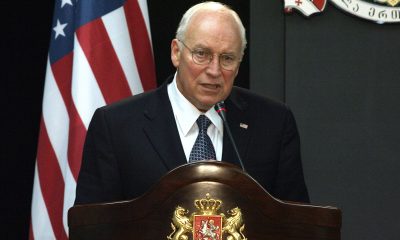Movies
‘The Favourite’ ‘Crazy, Rich’ movies of the year
Gaga and Rupert wowed, ‘conversion’ therapy got skewered and festivals delighted

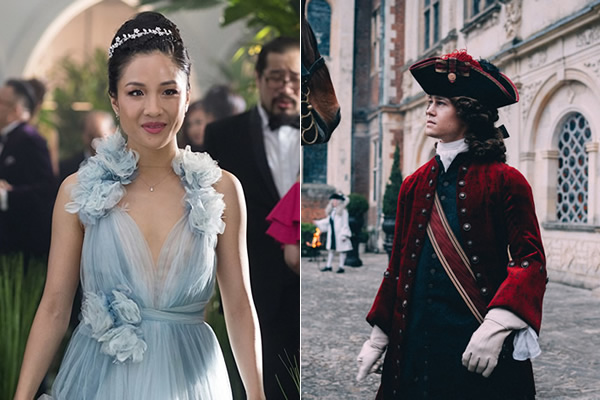
On left, Constance Wu in ‘Crazy Rich Asians’ and Joe Alwyn in ‘The Favourite.’ (Photo of Wu by Sanja Bucko courtesy Warner Bros. Entertainment; photo of Alwyn courtesy Twentieth Century Fox)
As the Golden Globe nominations richly demonstrate, 2018 was a great year for LGBT cinema.
At the top of the list is Yorgos Lanthimos’ stunning “The Favourite,” a bawdy romp through English history. Olivia Colman is Queen Anne and Rachel Weisz and Emma Stone are two ladies vying for her affection — and a share of her power.
The Golden Globe slate also includes “Can You Ever Forgive Me?” about a lesbian grifter and her gay sidekick; “Bohemian Rhapsody” with Rami Malek as Queen lead singer Freddie Mercury; “Crazy Rich Asians;” Lady Gaga’s incredible performance in “A Star Is Born” and two movies that will open in D.C. on Dec, 25: “If Beale Street Could Talk,” written and directed by “Moonlight’s” Barry Jenkins from the novel by James Baldwin; and, “Vice,” the Dick Cheney biopic featuring Alison Pill as his openly lesbian daughter Mary.
There’s also the controversial Belgian film “Girl” about a trans ballerina that stars a male actor in the lead.
Two excellent movies focused on the harmful practice of conversion therapy: the Golden Globe nominee “Boy Erased” and the Sundance Grand Jury Prize winner “The Miseducation of Cameron Post.”
Four interesting movies turned their focus to the younger LGBT generation. Known primarily for his innovative and inclusive programming for the CW network, Greg Berlanti directed “Love, Simon,” a moving rom-com about a closeted high-school student. The inventive “Every Day” explored the complex relationship between a high school girl and a pansexual entity who inhabits a different human body (male or female) every day; “Skeleton Twins” director Craig Johnson helmed the quirky high school coming-out comedy “Alex Strangelove.” Claire Danes and Jim Parsons starred in trans director Jake Howard’s “A Kid Like Jake” about a Brooklyn couple with a gender non-conforming child.
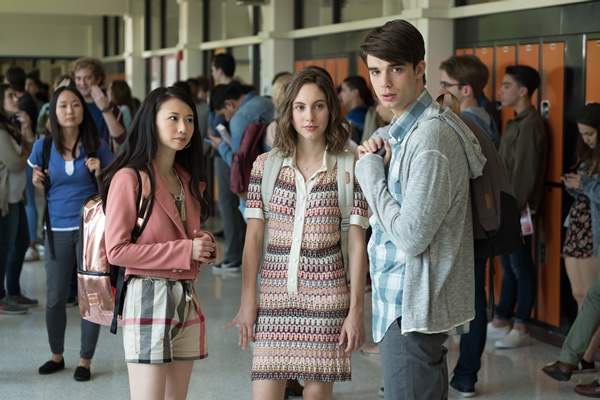
‘Alex Strangelove’ (Photo courtesy of Netflix)
Other notable LGBT releases included “Colette” about the infamous French author; “The Happy Prince,” Rupert Everett’s unconventional biopic about the convention-shattering gay author Oscar Wilde; the searing coming-of-age story “We The Animals;” “Lez Bomb,” a comedy about a closeted lesbian who decides to come out to her family on Thanksgiving; the adoption dramedy “Instant Family;” “Lizzie,” a retelling of the Lizzie Borden case with a lesbian twist; “Hearts Beat Loud” a moving drama about a record store owner (Nick Offerman) and his lesbian daughter who’s about to leave for college (out actress Kiersey Clemons); and, the sensuous “Mary Queen of Scots” with passionate performances by Saiorse Ronan and Margot Robbie and a crucial gay plot twist.
Luckily for LGBT cinephiles, the D.C. Metro area is home to a number of wonderful film festivals that regularly feature queer content.
Reel Affirmations, D.C.’s international LGBT film festival offers monthly screenings and a weekend-long festival every November. Some of this year’s highlights included the stunning “1985” about a closeted young man with AIDS returning to his Texas hometown to spend the holidays with his conservative family; “Water in a Broken Glass,” an excellent drama about a bisexual artist by first-time director Jamelle Williams-Thomas; “Just Friends,” a beautiful low-key Dutch drama about two young men and their intrusive mothers; and, “Buddies,” a restored version of the first feature length movie about AIDS crisis.
The Washington Jewish Film Festival also screens films throughout the year. Their annual festival in May spotlights “Rated LGBTQ,” a thoughtful collection of current and classic queer movies. This year’s schedule included “The Cakemaker,” a complex and moving queer drama about delicious baked good and breaking boundaries of gender, sexual orientation, family relationships and nationality.
In Baltimore, the Maryland Film Festival offers year-round programming at the SNF Parkway Theatre as well as a five-day celebration of contemporary cinema every May. Legendary gay filmmaker John Waters is on its board of directors and every year he personally presents one of his favorite offbeat movies as part of the Festival. This year’s selection was “I, Olga Hepnarová” about a lesbian mass murderer in Poland.
AFI Silver in downtown Silver Spring offers a rich blend of contemporary indie cinema, carefully curated celebrations of movies by American and global filmmakers, and, glittering regional film festivals that offer D.C. audiences the chance to see films that won’t be screened anywhere else. LGBT movies are always part of the diverse programming.
D.C. is also host to the annual AFI DOCS festival which celebrates the amazing diversity of full-length and short documentary films. This year’s LGBT offering examined slam poets (“Don’t Be Nice”), a small town in Arkansas where life is dominated by the annual passion play and the local gay bar (“The Gospel According to Eureka”) and out professional athletes (“Alone in the Game”).
Some of the other great LGBT documentaries released in 2018 included “McQueen” (designer Alexander McQueen), “Love Cecil” (costume designer Cecil Beaton), “The Gospel According to André” (designer and journalist André Leon Talley), “Whitney” (singer Whitney Houston), “Won’t You Be My Neighbor”(Fred Rogers and friends, including the black gay opera singer Françoise Clemmons who played Officer Clemmons on “Mister Rogers’ Neighborhood”), “Far From the Tree” (the ground-breaking research and personal history of Andrew Solomon), “Scotty and the Secret History of Hollywood” (Hollywood pimp Scotty Bowers) and “Dark Money” (a look at the dire impact of the Citizens United ruling on American politics, expertly directed by trans filmmaker Kimberley Reed).
Other LGBT-friendly film festivals include Filmfest DC, which screened the lesbian drama “Disobedience” by director Sebastián Lelio (“A Fantastic Woman”); the Annapolis Film Festival; D.C. Shorts; the amazing 48 Hour Film Project; and, the Middleburg (Va.) Film Festival where Hollywood meets Capitol Hill.
Finally, beyond the multiplexes, the cinema landscape in the metro D.C. area includes two movie chains that are steadfast supporters are the LGBT community and independent cinema. The Landmark chain now has four area locations (the E Street Cinema, Bethesda Row Cinema, Atlantic Plumbing Cinema and the West End Cinema) and the Angelika chain presents films at the Pop-Up at Union Market and the Mosaic in Fairfax. In addition, the Avalon Theatre in northwest D.C. is a crucial component in the vibrant Chevy Chase neighborhood.
And with that, it’s all over except for the awards shows. The Golden Globes will be awarded on Jan. 6 and the Academy Awards will be presented on Feb. 24.
Movies
In solid ‘Nuremberg,’ the Nazis are still the bad guys
A condemnation of fascist mentality that permits extremist ideologies to take power
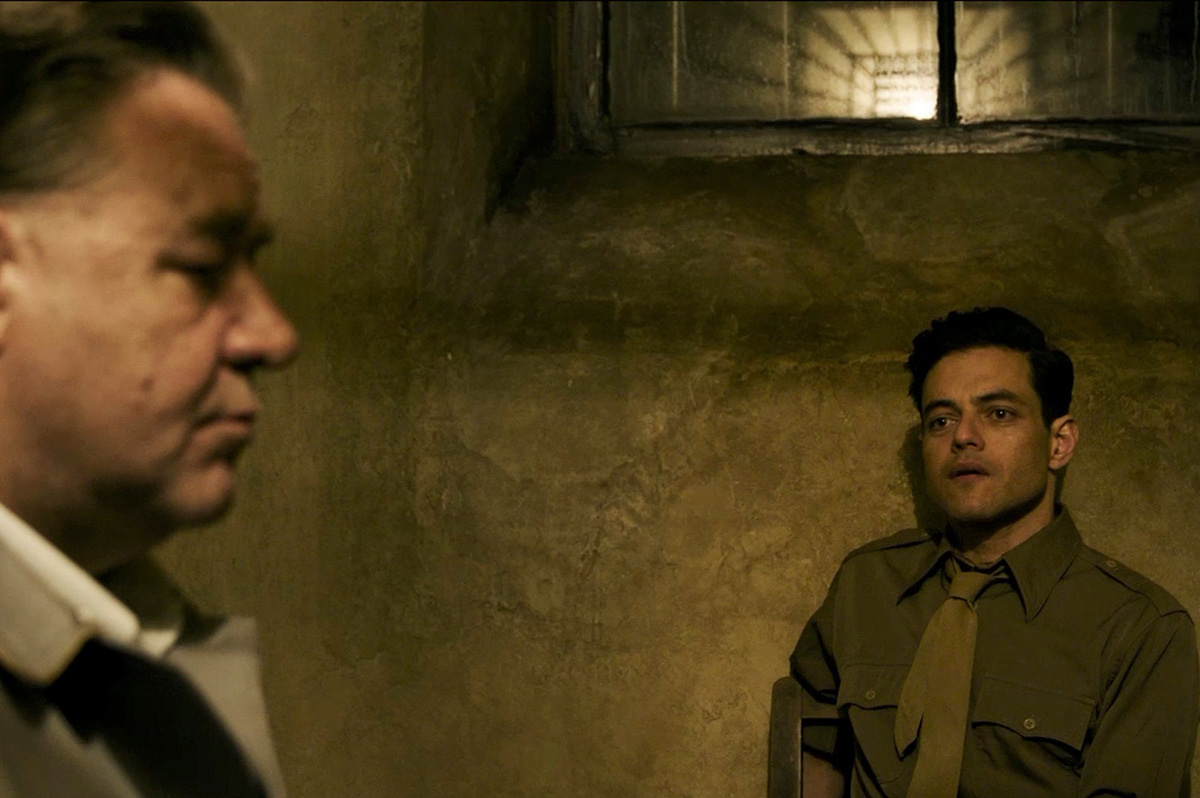
In any year prior to this one, there would be nothing controversial about “Nuremberg.”
In fact, writer/director James Vanderbilt’s historical drama – based on a book by Jack El-Hai about the relationship between Nazi second-in-command Hermann Göring and the American psychiatrist who was tasked with studying him ahead of the 1945 international war crimes trial in the titular German city – would likely seem like a safely middle-of-the-road bet for a studio “prestige” project, a glossy and sharply emotional crowd-pleaser designed to attract awards while also reinforcing the kind of American values that almost everyone can reasonably agree upon.
This, however, is 2025. We no longer live in a culture where condemning an explicitly racist and inherently cruel authoritarian ideology feels like something we can all agree upon, and the tension that arises from that topsy-turvy realization (can we still call Nazis “bad?”) not only lends it an air of radical defiance, but gives it a sense of timely urgency – even though the true story it tells took place 80 years ago.
Constructed as an ensemble narrative, it intertwines the stories of multiple characters as it follows the behind-the-scenes efforts to bring the surviving leadership of Hitler’s fallen “Third Reich” to justice in the wake of World War II, including U.S. Supreme Court Justice Robert Jackson (Michael Shannon), who is assigned to spearhead the trials despite a lack of established precedent for enforcing international law. Its central focus, however, lands on Douglas Kelley (Rami Malek), a psychiatrist working with the Military Intelligence Corps who is assigned to study the former Nazi leadership – especially Göring (Russell Crowe), Hitler’s right-hand man and the top surviving officer of the defeated regime – and assess their competency to stand trial during the early stages of the Nuremberg hearings.
Aided by his translator, Sgt. Howie Triest (Leo Woodall), who also serves as his sounding board and companion, Kelley establishes a relationship with the highly intelligent and deeply arrogant Göring, hoping to gain insight into the Nazi mindset that might help prevent the atrocities perpetrated by him and his fellow defendants from ever happening again, yet entering into a treacherous game of psychological cat-and-mouse that threatens to compromise his position and potentially undermine the trial’s already-shaky chances for success.
For those who are already familiar with the history and outcome of the Nuremberg trials, there won’t be much in the way of suspense; most of us born in the generations after WWII, however, are probably not. They were a radical notion at the time, a daring effort to impose accountability at an international level upon world leaders who would violate human rights and commit atrocities for the sake of power, profit, and control. They were widely viewed with mistrust, seen by many as an opportunity for the surviving Nazi establishment to turn the fickle tides of world opinion by painting themselves as the victims of persecution. There was an undeniable desire for closure involved; the world wanted to put the tragedy – a multinational war that ended more human lives than any other conflict in history before it – in the rear-view mirror, and a rush to embrace a comforting fantasy of global unity that had already begun to disintegrate into a “cold war” that would last for decades. “Nuremberg” captures that tenuous sense of make-it-or-break-it uncertainty, giving us a portrait of the tribunal’s major players as flawed, overburdened, and far from united in their individual national agendas. These trials were an experiment in global justice, and they set the stage for a half-century’s worth of international cooperation, even if it was permeated by a deep sense of mistrust, all around.
Yet despite the political and personal undercurrents that run beneath its story, Vanderbilt’s movie holds tight to a higher imperative. Judge Jackson may have ambitions to become Chief Justice of SCOTUS, but his commitment to opposing authoritarian atrocity supersedes all other considerations; and while Kelley’s own ego may cloud his judgment in his dealings with Göring, his endgame of tripping up the Nazi Reichsmarschall never wavers. In the end, “Nuremberg” remains unequivocal in its goal – to fight against institutionalized racism, fetishized nationalism, and the amoral cruelty of a power-hungry autocrat.
Yes, it’s a “feel-good” movie for the times (if such a term can be used for a movie that includes harrowing real-life footage of Holocaust atrocities), a reinforcement of what now feels like an uncomfortably old-fashioned set of basic values in the face of a clear and present danger; mounted with all the high-dollar immersive “feels” that Hollywood can provide, it offers up a period piece which comments by mere implication on the tides of current-day history-in-the-making, and evokes an old spirit of American humanism as it wrangles with the complexities of politics, ethics, and justice that endure unabated today. At the same time, it reminds us that justice is shaped by power, and that it’s never a sure bet that it will prevail.
Yet while it’s every inch the well-produced, slick slice of Hollywood-style history, “Nuremberg” doesn’t deliver the kind of definitive closure we might long for in our troubled times. For all its classic bravado and heartfelt idealism, it can’t deliver the comforting reassurances we desire because history itself does not provide them. The trials were not an unequivocal triumph; though they may have set a precedent in bringing accountability to power on the world stage, it’s one which, eight decades later, has yet to be fully realized. Vanderbilt doesn’t try to rewrite the facts to make them more satisfying, or soften the blow of their hard lessons, and while his movie certainly feels conscious of the precarious times in which it arrives, it doesn’t try to give us the kind of wish-fulfillment ending we might long to see – which ultimately gives it a ring of bitter truth and reminds us that our world continues to suffer from the evil of corrupt men, even when they are defeated.
It’s a movie populated with outstanding performances. Crowe delivers his most impressive turn in years as the chillingly malevolent Göring, and Malek channels all his intensity into Kelley to create a powerfully relatable flawed hero for us to cheer; Shannon shines as the idealistic but practical Jackson, and Woodall provides a likable everyman solidity to counter Malek’s volatile intensity. It might feel early to talk about awards, but it will be no surprise if some of these names end up in the pool of this year’s contenders.
Is “Nuremberg” the anti-Nazi movie we need right now? It certainly seems to position itself as such, and it admittedly delivers an unequivocal condemnation of the kind of fascist, inhuman mentality that permits such extremist ideologies to take power. In the end, though, it leaves us with the awareness that any victory over such evil can only ever be a measured against the loss and tragedy that is left in its wake – and that the best victory of all is to stop it before it starts.
In 2025, that feels like small comfort – but it’s enough to make Vanderbilt’s slick historical drama a worthy slice of inspiration to propel us into the fight that faces us in 2026 and beyond.
Movies
Sydney Sweeney embodies lesbian boxer in new film ‘Christy’
Christy Martin’s life story an inspirational tale of survival
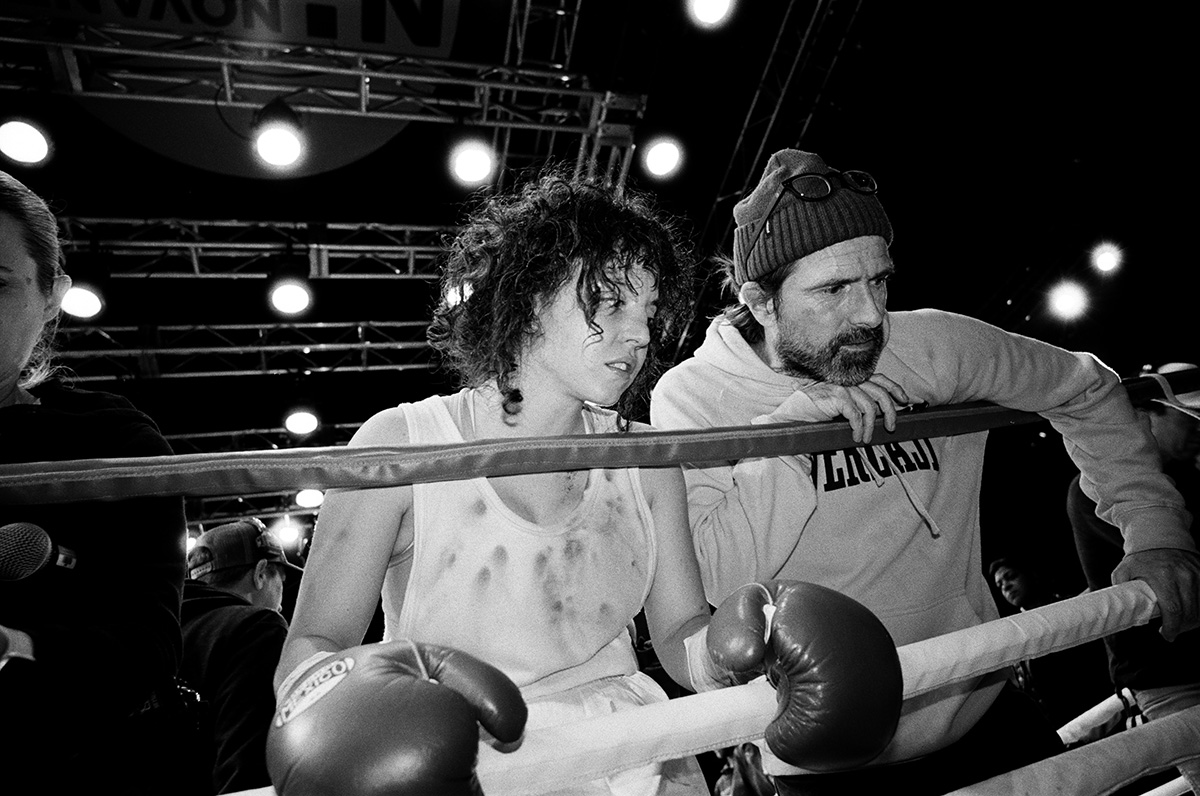
For legendary professional boxer Christy Martin, never in a million years did she expect to see the riveting story of her rapid rise to fame onscreen.
“When somebody first contacted me about turning my life into a movie, I thought they were joking,” Martin said at a recent Golden Globes press event for her movie, “Christy.”
“I was so afraid that my life would be as I call it, Hollywoodized.”
Martin was put at ease once she saw how committed co-screenwriters Mirrah Foulkes, and Australian filmmaker David Michôd were to the material, and how relentless actress Sydney Sweeney was to accurately portray her.
“Mirrah was very fair to me and treated me great on the paper … I feel like this is the most powerful group that could ever come together to tell my story,” she acknowledged.
In “Christy,” viewers see Martin’s combative spirit, in her ongoing quest to win each fight. Under her demanding coach turned manager-husband Jim Martin (played by Ben Foster), Christy is fearless in the boxing ring, yet increasingly troubled as she deals with the pressure of her mother, sexual identity issues, drugs, and a physically abusive marriage that almost ended in death.
“It’s crazy to see anybody, but especially Syd, become me,” she told the Los Angeles Blade. “It’s overwhelming! A little much for a coal miner’s daughter from a small town in southern West Virginia.”
For Sweeney, who is also a producer on the film, playing the courageous lesbian boxer has been a life-changing experience. “This is the most important character I have ever played. It’s the most important story I have ever told or will tell. It’s an immense honor to bring her to life.”
To become Martin, Sweeney worked hard to absorb as much information on her as possible.
“I had the real Christy, and then I had years and years of interviews and fight footage and her book and her documentary on Netflix that I was able to pull from. I like to build books for my characters, to create their entire life, from the day they’re born until the first time you meet them onscreen. So just kind of filling out the entire puzzle of Christy here.”
Sweeney said the many scenes where Martin’s mom couldn’t accept she was gay were immensely challenging to be a part of.
“That was probably one of the hardest scenes for me,” Sweeney noted. “I have very supportive parents, and I can’t imagine what it would be like to not have your mom or dad to turn to ask for help or guidance or just need support. So it was a very difficult scene to process.”
Equally challenging was the rigorous process Sweeney went through in order to become Martin in the movie.
“It was a huge physical transformation for me. I trained for two-and-a-half months before we even started filming, and I put on 35 pounds for the role, so it was a big transformation.”
As difficult as it was to deal with a film that dives into domestic violence, Sweeney was able to shake the character off when she was done at the end of each day.
“I have a rule for myself where I don’t allow any of my own thoughts or memories into a character. So when the moment they call ‘cut,’ I’m back to being Syd, and I leave it all in the scene, and that’s the story that I’m telling. Otherwise I’m just me; so I go home when I’m me.”
Martin hopes that audiences leave the theater with a sense of faith.
“I think we showed a path of how to get out of any situation that you might be in. And also, it’s very important to be true to you. Sometimes that takes a while — it took me a little while — but I’m happy to be true to me. And that’s what we want; the whole story is about being who you are.”
Sweeney would love viewers to walk away and demand to be “Christy Strong.”
“I hope that they want to be kind and compassionate to others around them, and be that helping hand. Christy’s story is singular, and yet her story of triumph, survival and continuation, supports those who are in experiences of domestic violence behind closed doors. She is one of the great champions.”
Sweeney loves that Martin is also a great advocate of new boxing talent. “That spark of life is something that I think at the end of the day, ‘Christy’ is about– it’s the spark to keep going and be who you are proudly.”
Movies
Superb direction, performances create a ‘Day’ to remember
A rich cinematic tapestry with deep observations about art, life, friendship

According to writer/director Ira Sachs, “Peter Hujar’s Day” is “a film about what it is to be an artist among artists in a city where no one was making any money.” At least, that’s what Sachs – an Indie filmmaker who has been exploring his identities as both a gay and Jewish man onscreen since his 1997 debut effort, “The Delta” – told IndieWire, with tongue no doubt firmly planted in cheek, in an interview last year.
Certainly, money is a concern in his latest effort – which re-enacts a 1974 interview between photographer Peter Hujar (Ben Whishaw) and writer Linda Rosenkrantz (Rebecca Hall), as part of an intended book documenting artists over a single 24-hour period in their lives – and is much on the mind of its titular character as he dutifully (and with meticulous detail) recounts the events of his previous day during the course of the movie. To say it is the whole point, though, is clearly an overstatement. Indeed, hearing discussions today of prices from 1974 – when the notion of paying more than $7 for Chinese takeout in New York City seemed outrageous – might almost be described as little more than comic relief.
Adapted from a real-life interview with Hujar, which Rosenkrantz published as a stand-alone piece in 2021 (her intended book had been abandoned) after a transcript was discovered in the late photographer’s archives, “Peter Hujar’s Day” inevitably delivers insights on its subject – a deeply influential figure in New York culture of the seventies and eighties, who would go on to document the scourge of AIDS until he died from it himself, in 1987. There’s no plot, really, except for the recalled narrative itself, which involves an early meeting with a French journalist (who is picking up Hujar’s images of model Lauren Hutton), an afternoon photo shoot with iconic queer “Beat Generation” poet/activist Allen Ginsburg, and an evening of mundane social interaction over the aforementioned Chinese food. Yet it’s through this formalized structure – the agreed-upon relation of a sequence of events, with the thoughts, observations, and reflections that come with them – that the true substance shines through.
In relaying his narrative, Hujar exhibits the kind of uncompromising – and slavishly precise – devotion to detail that also informed his work as a photographer; a mundane chronology of events reveals a universe of thought, perception, and philosophy of which most of us might be unaware while they were happening. Yet he and Rosenkrantz (at least in Sachs’ reconstruction of their conversation) are both artists who are keenly aware of such things; after all, it’s this glimpse of an “inner life,” of which we are rarely cognizant in the moment, that was/is their stock-in-trade. It’s the stuff we don’t think of while we’re living our lives: the associations, the judgments, the selective importance with which we assign each aspect of our experiences, that later become a window into our souls – if we take the opportunity to look through it. And while the revelations that come may occasionally paint them in a less-than-idealized light (especially Hujar, whose preoccupations with status, reputation, appearances, and yes, money, often emerge as he discusses the encounter with Ginsberg and his other interactions), they never feel like definitive interpretations of character; rather, they’re just fleeting moments among all the others, temporary reflections in the ever-ongoing evolution of a lifetime.
Needless to say, perhaps, “Peter Hujar’s Day” is not the kind of movie that will be a crowd-pleaser for everyone. Like Louis Malle’s equally acclaimed-and-notorious “My Dinner With Andre” from 1981, it’s essentially an action-free narrative comprised entirely of a conversation between two people; nothing really happens, per se, except for what we hear described in Hujar’s description of his day, and even that is more or less devoid of any real dramatic weight. But for those with the taste for such an intellectual exercise, it’s a rich and complex cinematic tapestry that rewards our patience with a trove of deep observations about art, life, and friendship – indeed, while its focus is ostensibly on Hujar’s “day,” the deep and intimate love between he and Rosenkrantz underscores everything that we see, arguably landing with a much deeper resonance than anything that is ever spoken out loud during the course of the film – and never permits our attention to flag for even a moment.
Shooting his movie in a deliberately self-referential style, Sachs weaves the cinematic process of recreating the interview into the recreation itself, bridging mediums and blurring lines of reality to create a filmed meditation that mirrors the inherent artifice of Rosenkrantz’s original concept, yet honors the material’s nearly slavish devotion to the mundane minutiae that makes up daily life, even for artists. This is especially true for both Hujar and Rosenkrantz, whose work hinges so directly to the experience of the moment – in photography, the entire end product is tied to the immediacy of a single, captured fragment of existence, and it is no less so for a writer attempting to create a portrait (of sorts) composed entirely of fleeting words and memories. Such intangibles can often feel remote or even superficial without further reflection, and the fact that Sachs is able to reveal a deeper world beyond that surface speaks volumes to his own abilities as an artist, which he deploys with a sure hand to turn a potentially stagnant 75 minutes of film into something hypnotic.
Of course, he could not accomplish that feat without his actors. Whishaw, who has proven his gifts and versatility in an array of film work including not only “art films” like this one but roles from the voice of Paddington Bear to “Q” in the Daniel Craig-led “James Bond” films, delivers a stunning performance, carrying at least 75% of the film’s dialogue with the same kind of casual, in-the-moment authenticity as one might expect at a dinner party with friends; and though Hall has less speaking to do, she makes up for it in sheer presence, lending a palpable sense of respect, love, and adoration to Rosenkrantz’s relationship with Hujar.
In fact, by the time the final credits role, it’s that relationship that arguably leaves the deepest impression on us; though these two people converse about the “hoi polloi” of New York, dropping legendary names and reminding us with every word of their importance in the interwoven cultural landscape – evoked with the casual air of everyday routine before it becomes cemented as history – of their era, it’s the tangible, intimate friendship they share that sticks with us, and ultimately feels more important than any of the rest of it. For all its trappings of artistic style, form, and retrospective cultural commentary, it’s this simple, deeply human element that seems to matter the most – and that’s why it all works, in the end. None of its insights or observations would land without that simple-but-crucial link to humanity.
Fortunately, its director and stars understand this perfectly, and that’s why “Peter Hujar’s Day” has an appeal that transcends its rarified portrait of time, place, and personality. It recognizes that it’s what can be read between the lines of our lives that matters, and that’s an insight that’s often lost in the whirlwind of our quotidian existence.
-

 Politics4 days ago
Politics4 days agoPro-trans candidates triumph despite millions in transphobic ads
-

 Opinions4 days ago
Opinions4 days agoDemocratic Socialism won’t win the whole country
-

 National4 days ago
National4 days agoUS bishops ban gender-affirming care at Catholic hospitals
-

 Drag5 days ago
Drag5 days agoGottmik and Violet Chachki are bringing drag excellence across the country with ‘The Knockout Tour’





